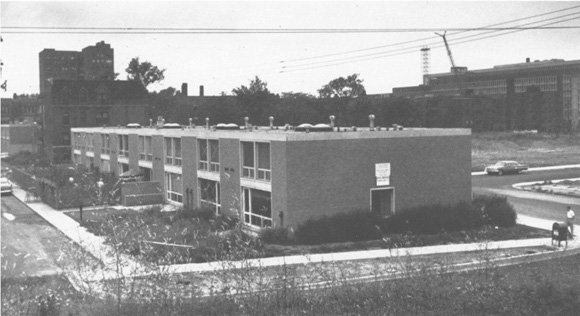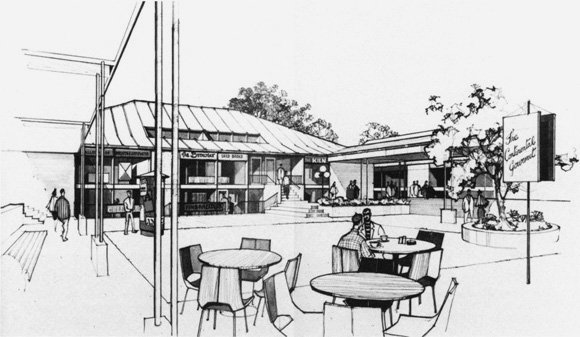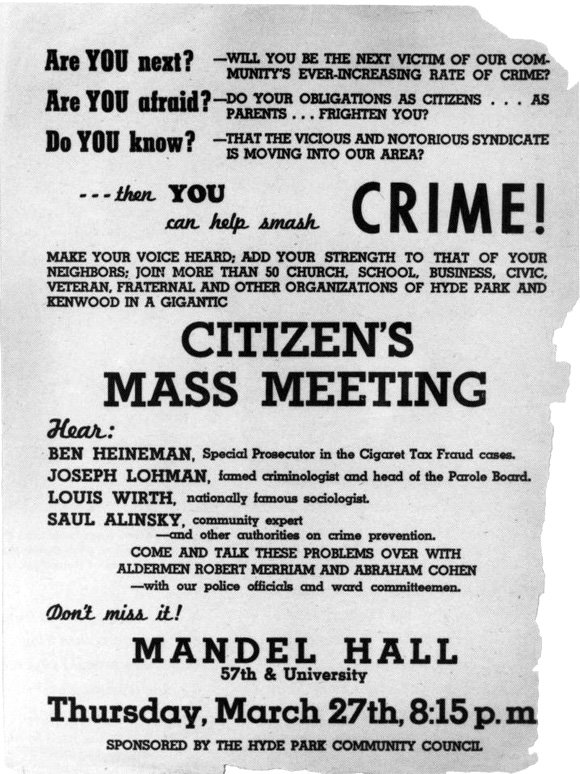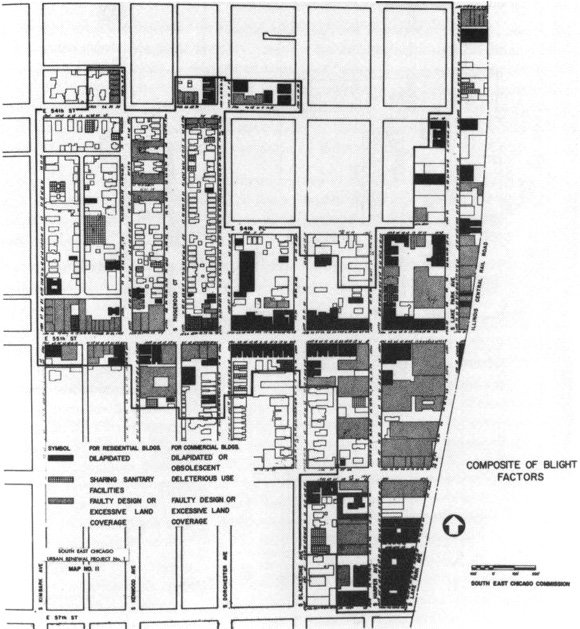Renewal and Revival
Before 1950, ninety percent of the University's faculty lived within walking distance of campus, but after that point a steady decline set in that lowered the number to seventy percent by 1964. For members of the University community who were committed to remaining residents of Hyde Park-Kenwood, renewal offered the prospect of stabilizing an unpredictable pattern of mobility that threatened the character of the community.By the late 1940s, economic and demographic changes had worn the social fabric of Hyde Park-Kenwood, raising fears that the neighborhood would be undermined by the deteriorating property and flight of residents that were already widespread in the surrounding areas. Maintenance of commercial and residential buildings had been postponed during the decade of the depression and the years of World War II. Buildings formerly occupied by middle- and upperclass families had been subdivided into small one- and two-room apartments and allowed to decline. As the density of poor residents rose, so did the problems of poverty and crime.
At the University, administrators faced a sixty percent drop in student applications in the early 1950s and increasing difficulties in recruiting faculty. Rumors spread that the University was considering moving its campus out of Hyde Park. The Board of Trustees and administrators decided to intervene aggressively in the neighborhood before, as President George W. Beadle was to put it, "they ... ended up with a $200 million investment in a slum, without anybody to do research or any students to educate."
Organized action to improve the neighborhood was launched in 1949 with the formation of the Hyde Park-Kenwood Community Conference (HPKCC). Drawing heavily for support on local churches and synagogues, the Conference chose a Unitarian minister as its first chairman. From the start, the Conference also maintained an interracial membership and addressed the tensions of race relations along with the problems of housing and crime. The emphasis of its programs was on assuring the neighborhood's future as a stable, prosperous, and integrated community.
In 1952, the University
made its principal commitment to neighborhood renewal. A mass meeting
called to discuss crime resulted in the appointment of a Committee of
Five headed by University Chancellor Lawrence A. Kimpton and including
community leaders such as Rabbi Louis L. Mann of Sinai Temple. The Committee
in turn proposed the creation of a new coordinating organization to
deal with the problems of Hyde Park and Kenwood as well as Oakland to
the north and Woodlawn to the south. Accordingly, the South East Chicago
Commission (SECC) was formed with Chancellor Kimpton as its chairman
and Julian H. Levi, a corporate attorney and brother of Law School dean
Edward H. Levi, as its executive director. The goals of the SECC were
to increase police protection, enforce building codes, promote residential
stability, and draw up a plan for the redevelopment of Hyde Park's most
seriously deteriorated areas. Although the HPKCC and the SECC were often
at odds over matters of policy, they shared a common interest in confronting
controversial issues such as poverty, crime, residential displacement,
urban planning, and racial integration, which few other urban communities
in the early 1950s had addressed.
With a grant from the Field Foundation, the University and SECC created a plan for redevelopment of an extensive area of Hyde Park centered on 55th Street and Lake Park Avenue. This plan was approved by federal, state, and city governments and received the strong support of Mayor Richard J. Daley. The initial stage of work, demolition of older substandard buildings, began in May 1955. By the summer of 1958, large tracts of land had been cleared, and construction got underway on new apartments, townhouses, and a shopping center.
The Hyde Park neighborhood redevelopment project was expensive and inevitably imperfect. Over 15,000 neighborhood residents were displaced as buildings considered substandard were torn down. Some of Hyde Park's historic nineteenth-century housing stock was lost, and the character of entire blocks and streets in the heart of the neighborhood was completely altered. The cost of the entire redevelopment effort in the area surrounding the University campus exceeded $300 million. The federal government, which regarded Hyde Park as an important testing ground for emerging urban renewal strategies, provided $4.6 million for development projects. The University invested $29 million, and an additional $250 million was secured from private investors.
As one of the earliest massive efforts to reshape an American urban neighborhood, the Hyde Park-Kenwood renewal program received its full share of social, political, and architectural criticism. Some of the area's old, familiar graciousness and raucousness would have disappeared over time and could not have been preserved in Hyde Park any more than in any other vigorous city neighborhood. Yet, working in concert, Hyde Park residents and the University were singularly successful in constructing a formula for an economically stable and racially integrated community and in confirming the University's commitment to remain an urban institution.

In the background, the dual towers of the University Apartments on 55th Street are nearing completion. Photograph by AI Henderson.

Chicago: Harper Court Foundation, 1963
Funded with bonds sold to the community,
Harper Court was intended to replace artists' quarters lost
to urban renewal and provide space for new galleries and "creative
enterprises." Muriel Beadle, wife of President George W. Beadle,
led the development campaign. Drawing by Human Tan; John T. Black, architect.


